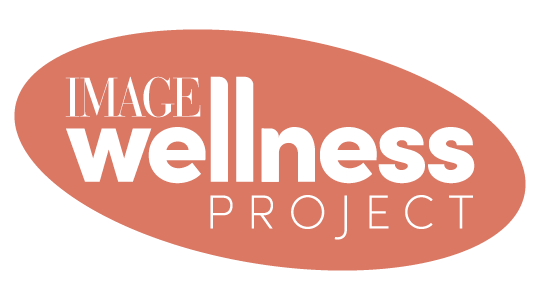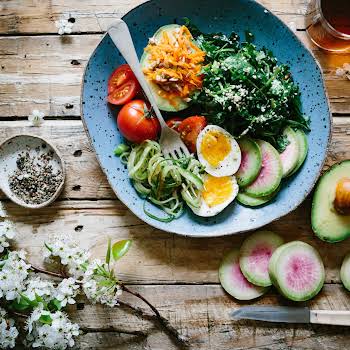
Sponsored
Simple ways to nurture your children’s minds (and your own)
Sponsored By

By Julie Meehan
09th May 2024
09th May 2024
Sponsored By

There are proven ways to foster an overall sense of wellbeing in children, writes clinical psychologist, parenting coach and mum, Julie Meehan
Wellbeing. We hear so much talk about it nowadays – the wellness industry is well and truly thriving.
We are often bombarded with information about how to be fit, healthy, balanced, mindful, focused, fluid, flexible, supple, relaxed, active, that it is often impossible to take it all on board, and what’s more, know how much of it has a solid evidence base to support all of these calls to action.
Knowing what’s best for your child
Bringing your child’s wellbeing into the picture, and knowing what is best for them, can be even more overwhelming. As parents (and consumers) we are often met with conflicting views, information and opinions about what is best for our children. So much so that it can leave us so confused and uncertain as to what we should be doing that we may forget to trust ourselves as parents.
If you have ever found yourself in this mental state (I have been there many times), you likely know that it typically does not engender a sense of overall wellbeing – either in you or your child.
The integrated brain
What may be helpful for you to know is that recent research has revealed the best predictor for overall wellbeing in humans is for the brain to be in an integrated state. The brain is a phenomenally complex and wondrous organ that is made up of distinct areas that govern specific functions, as well as billions of circuits that link those areas together, which allows for the brain to function optimally.
An integrated brain is like a highly-functioning sports team where all the individual players are embodying their positions on the field but are communicating with each other so they can work together as a whole. An integrated brain is when the distinctive parts of the brain can do what they are designed to do, but are linked by a vast network of neural circuitry that is firing to allow optimal connection and communication with every part of the whole brain.
To apply this concept into everyday behaviour and feelings, an integrated brain state is when we are feeling receptive, regulated, open, alert, calm, attentive, present, flexible, emotionally balanced – generally feeling good and OK in our minds, bodies and feelings. When the brain is out of balance, we are in a reactive rather than receptive state.
This can show up in several ways, which is typically marked by emotional imbalance: we may become more rigid in our thoughts and behaviour, shutting down or withdrawing, and embracing a negative state of being, or our emotions and behaviour may feel chaotic and all over the place – and we lash out at others or ourselves, often showing a lot of expressed emotion.
When we feel too rigid it usually means that the different parts of our brains are not experiencing enough communication between each other. And when we are feeling in a more chaotic state, it means that there is not enough differentiation between the different parts of our brain.
Either way, our brains are out of balance.
The ‘Yes Brain’ and the ‘No Brain’ states
When you experience your children in a receptive state where they are open to learning new things, work difficulties out, stand up for themselves but also be available and compassionate towards others, be flexible, engaged, make good decisions and feel that they can bounce back even if they have failed, it is likely they are experiencing an integrated brain state – or a ‘Yes Brain’ – as Drs Dan Siegel and Tina Payne Bryson call it.
When you experience your child being overly-anxious, shutting down, withdrawing, crying excessively, shouting, lashing out, not being able to take on advice, talking about themselves (and others) in excessively negative terms, then they are likely to be in a ‘No Brain’ state – their brains are not functioning in an integrated way.
Of course, we can all experience ‘No Brain’ states at times — we wouldn’t be human otherwise. But when this state becomes the predominant state, mental health difficulties typically ensue. The good news, however, is that we can help our brains to become more integrated and stay integrated. It is possible to have a ‘Yes Brain’ state that becomes our primary way of being, underpinning how we relate to ourselves, others and the world around us.
Fostering wellbeing: 7 components of a healthy mind
There are many specific ways in which we can foster a ‘Yes Brain’ state in ourselves and in our children – some of which I have covered here and here. One broad approach is to consider what ingredients make for a healthy, well-balanced life, which is the approach we use when we are considering a healthy and well-balanced diet.
The food pyramid, which tells us what type of foods are recommended in our daily diet has recently been changed to the image of a healthy food plate. Drawing from this analogy, Dr Dan Siegel, neuropsychiatrist and psychotherapist, and his colleague Dr David Rock have drawn up what they call the Healthy Mind Platter™, which comprises of seven mental activities that allow for greater brain integration – therefore fostering a greater sense of wellbeing for us and our children.
According to Drs Siegel and Rock, the seven essential mental activities for optimal brain function and overall mental health are:
1) Focus time: Periods of the day when we can focus our minds on a particular task in a goal-oriented way that mentally challenges us in some way. This type of focus helps to create deeper connections in our brains. Any cognitively challenging task we engage in with some sense of outcome in mind, such as doing a crossword puzzle, solving an equation, writing up a report, etc., calls for this specific type of mental activity.
2) Play time: Unstructured and free playtime is essential for children, and in many ways, as important for adults. The type of unstructured, imaginative and creative play our children engage in creates deep connections within the brain, and it is absolutely essential that children have time each day to immerse themselves in play.
Likewise, for adults, time that allows us to be spontaneously creative and imaginative and engage in novelty in some way can be considered our playtime. Play is the work of both adults and children.
3) Connecting time: Connecting with other people (in person connection always trumps other forms of connecting) or connecting with nature in a meaningful way also promotes the firing of our neural connections, in particular, our ‘relationship’ circuitry. So the more the firing of these circuits is activated the more socially engaged we will feel and the more integrated our brains will be.
4) Physical time: Engaging in aerobic movement, be it running around the back garden, playing chasing, jogging, cycling, climbing a tree, skipping down the road to call for a friend, swimming etc., helps the brain to make more and deeper connections.
5) Time in: This is when we can take time not to take ‘time out’, but to go inwards, and spend time reflecting on our internal processes in some ways, such as out thoughts, feelings or images that our minds may produce. ‘Time in’ activities include mindfulness and meditation practice, and visualisations, or simply sitting quietly with an inward focus.
6) Down time: This is unfocused time where we can relax and allow our minds to wander. This type of mental activity, which includes daydreaming, is also essential to allow our brains to simply relax and recharge.
7) Sleep time: Our brains need to rest and restore themselves after working really hard during the day – they need to process the learnings we have acquired that day and refresh. Many of us (and possibly our children) don’t get enough sleep. What I have found personally is that when I can balance the other elements of the Healthy Mind Platter in a ‘good enough’ way, that I tend to sleep better.
What I really like about this approach is that it’s broad and not too specific, meaning that many of the activities you or your child are already engaging in will fall under at least one of the seven categories. This means that you may not necessarily need to add more elements to your life or your child’s life (our lives can seem so busy and packed as it is!), but simply readjust or recalibrate some of what you or your child are already engaging in.
Another aspect of this approach that I love is that it’s not prescriptive – it is not just another piece of information that is put out there to tell you what you should be doing (and in many ways setting us up for a sense of failure if we feel like we don’t achieve some goal that someone else has told us is important). Rather, it is a piece of guidance, allowing you to play around with the different elements, hopefully in a flexible, creative and fun way (all ‘Yes Brain’ states!).
It is something that you can share with your family (the image of the platter is available online), and give your children the agency and the responsibility to see how they can embrace all aspects of the platter in any given day.
It can also afford you the opportunity to reflect on whether there is too much, or too little of some of these components in your day and your child’s day. For example, unstructured play time and the mental activity of daydreaming are often activities that are undervalued in our society, whereas there is often an overemphasis on ‘focus time’.
This approach allows us to adjust anything that might be out of balance, hopefully buoyed with the knowledge that we need all of these components in our lives – adults and children alike.
A ‘good enough’ balance
And remember, this approach is about not reaching for perfection, but about finding a ‘good enough’ balance. And the best bit is that you will intuitively know when you have found that balance, because you will just feel good, and you will likely sense it in your children too.
Julie draws from the evidence-based work of Dr Dan Siegel, neuropsychiatrist, psychotherapist and Professor of Clinical Psychiatry at UCLA. To see more, visit www.drdansiegel.com
The IMAGE Wellness Project is powered by Meaghers Pharmacy and in association with Activia, its4women, Irish Life Health, KIND and Pestle & Mortar. Visit our Wellness Hub to download your valuable workbook and to follow weekly updates including interviews, videos and podcast episodes with our leading wellbeing experts.























